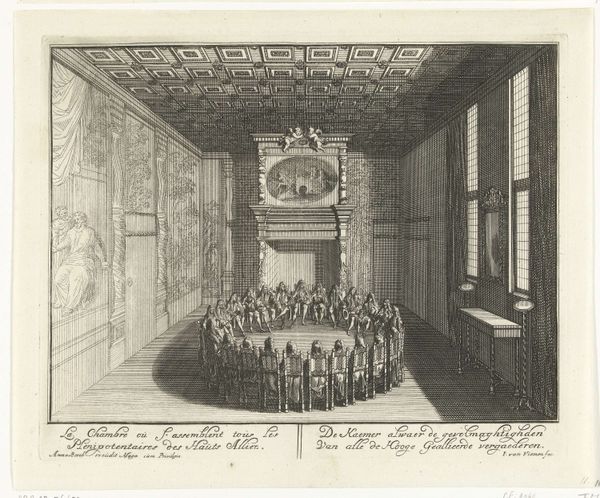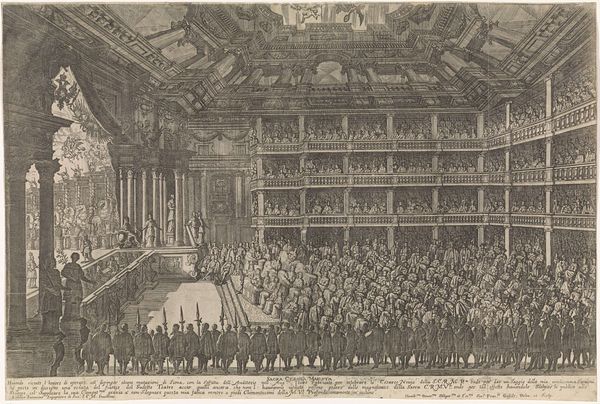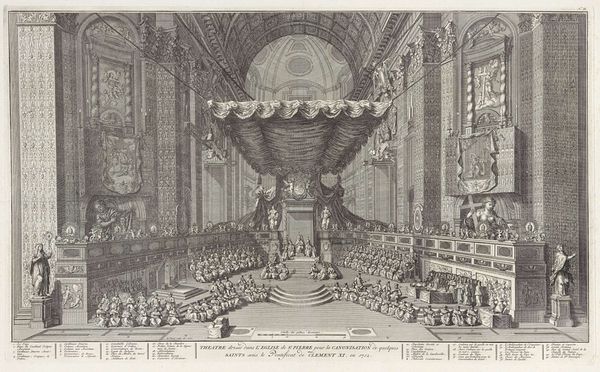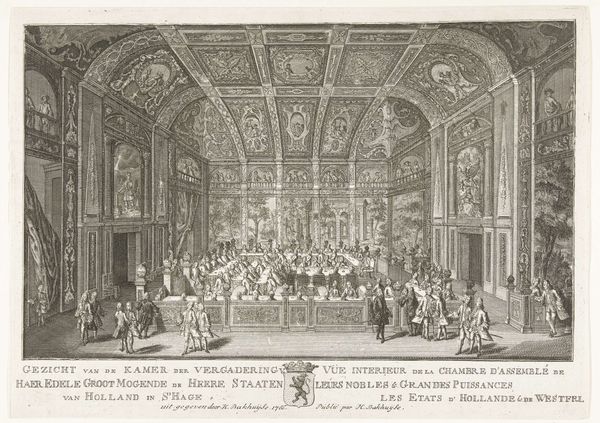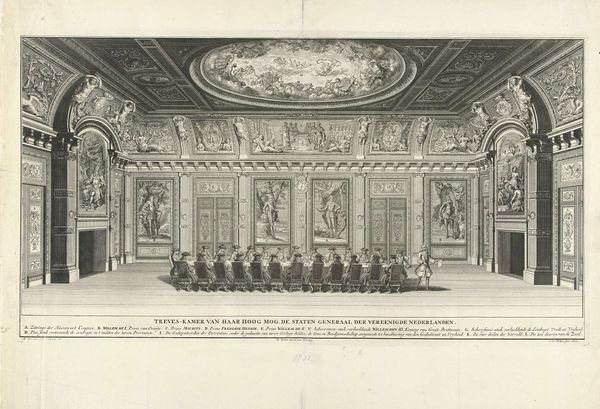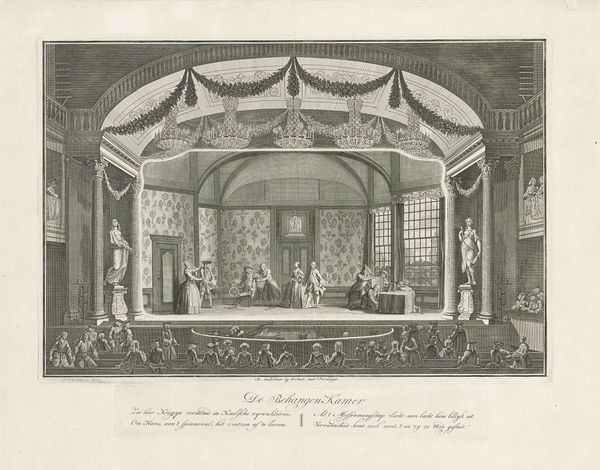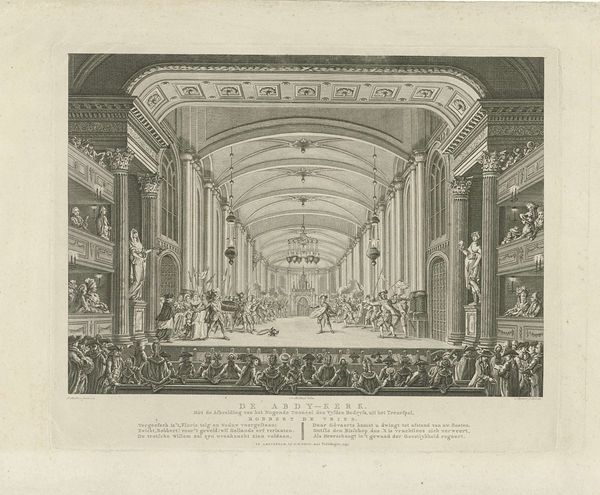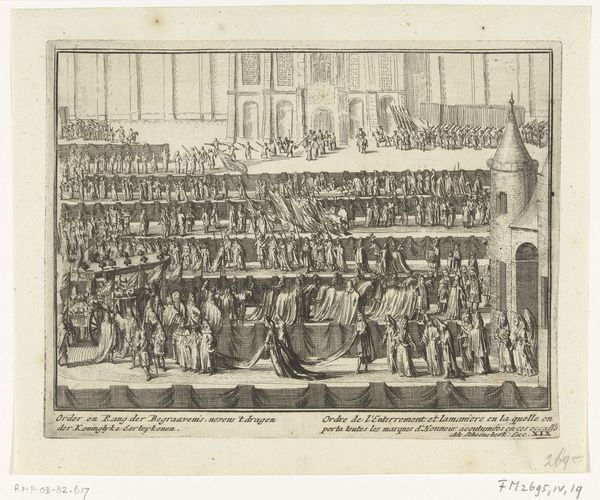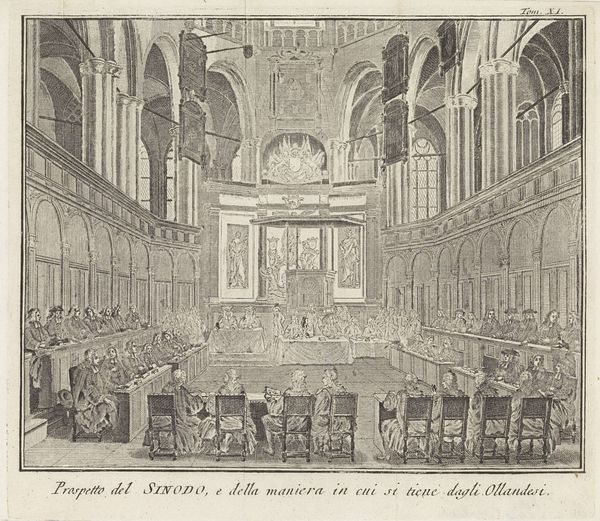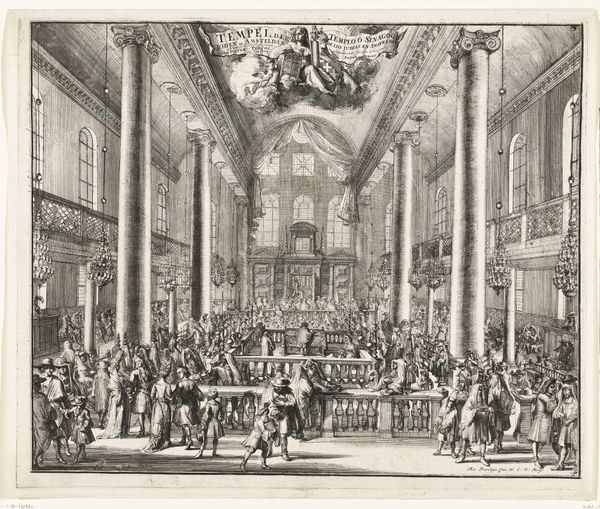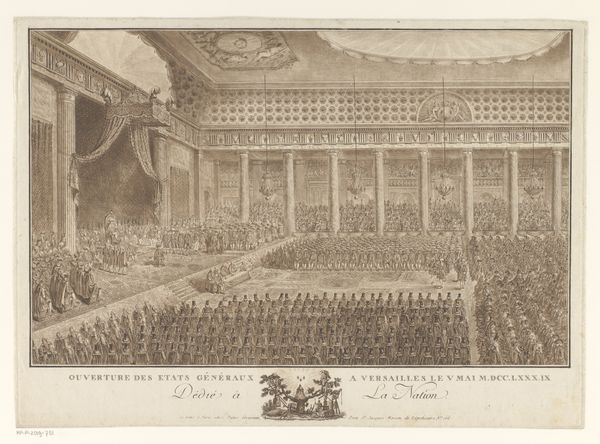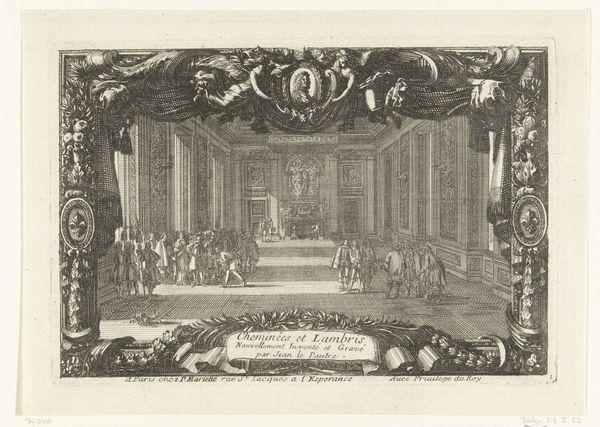
engraving
#
dutch-golden-age
#
perspective
#
cityscape
#
genre-painting
#
engraving
Dimensions: height 225 mm, width 307 mm
Copyright: Rijks Museum: Open Domain
Curator: The piece before us, rendered meticulously by Nicolaas van Frankendaal in 1774, is entitled "Interieur van de schouwburg te Amsterdam," which translates to "Interior of the Theater in Amsterdam." It’s an engraving currently held in the Rijksmuseum. Editor: It's stunning. The sheer density of the crowd, packed into this grand hall, is what immediately jumps out. And that receding perspective really gives you a sense of the theater's depth and volume, the tiers upon tiers… almost overwhelming. Curator: The depiction offers a window into the cultural life of Amsterdam during the Dutch Golden Age, capturing the ambiance of theatrical entertainment. The presence of a genre painting style is quite evident as well. Notice how the engraving medium allows for incredibly detailed rendering of the audience and the architectural elements. Editor: Definitely, but who had access to such spaces? Looking closely, it feels almost entirely composed of what we might assume were elite members of society. What kinds of performances did this social structure promote or even limit, consciously or unconsciously? It reflects the stark class divisions of the time, I think. Curator: Precisely. Public spaces like theaters have always been sites of social negotiation and power. In this piece, the gaze is directed both ways. The audience observes the play, but the artist, and by extension, we as viewers, are also observing the audience. How does the representation itself contribute to or challenge prevailing social norms? The choice of a panoramic perspective reinforces the impression of the theater as a contained microcosm of Amsterdam society. Editor: Thinking about the architecture and how it positions bodies reminds me how power is staged spatially too, not just on stage. These gilded boxes reinforce hierarchical social arrangements. Curator: An artwork like this urges us to look beyond just aesthetic appreciation. It enables us to contemplate on social norms and politics around spaces for art as they shift over centuries. Editor: Agreed, seeing it today prompts reflection on how far we’ve come in making cultural spaces accessible, and reminds us of how much further we must go in creating equitable and truly inclusive environments.
Comments
No comments
Be the first to comment and join the conversation on the ultimate creative platform.
